Photo by This TxDOT illustration shows what it could look like if frontage roads ran next to each other alongside a lowered and covered I-35. Austin would need to raise up to $800 million to pay for the coverings, or "caps," not including annual maintenance costs.
I-35 frontage roads would be on the same side of the interstate under TxDOT’s new plans
Thursday, January 27, 2022 by
Nathan Bernier, KUT The Texas Department of Transportation’s latest proposal to expand Interstate 35 includes a plan to run the northbound and southbound frontage roads directly next to each other on the same side of the highway between Cesar Chavez and Dean Keeton streets.
The frontage roads would be at ground level with the interstate lowered and possibly covered if the city of Austin can come up with an estimated $700 million to $800 million to pay for the coverings, or caps as they’re called.
“The northbound frontage road will come across Holly, marry up with the southbound and will be in a boulevard-style setting,” TxDOT Austin district engineer Tucker Ferguson said at an unveiling of the new schematics.
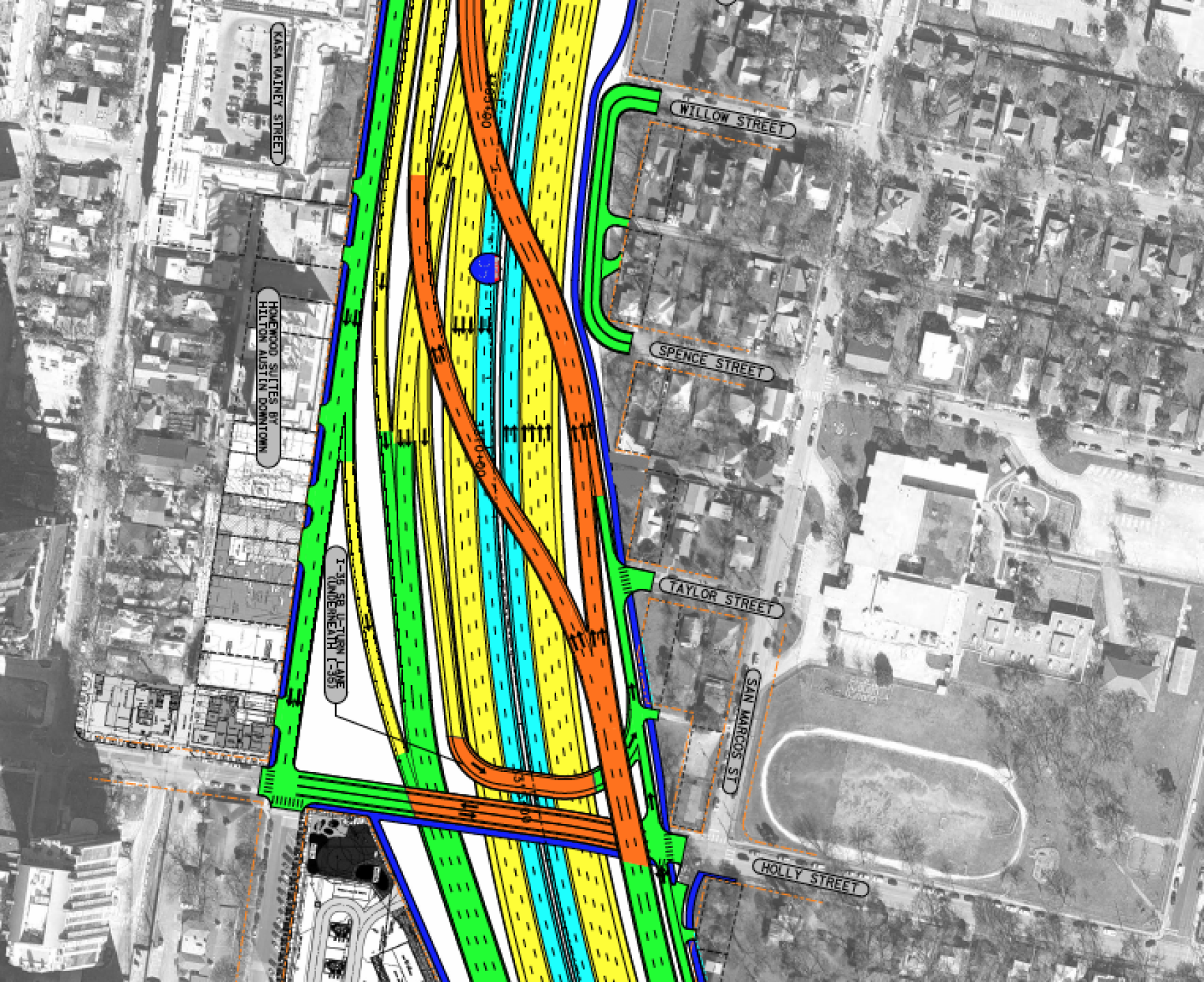
This portion of the schematic shows how the northbound frontage road would cross to the west side of I-35 near Holly Street.
Both frontage roads would cross over the lowered main lanes at 15th Street and run along the east side of I-35 to Dean Keeton Street. At that point, the southbound frontage road would pass back over to the west side of the interstate.
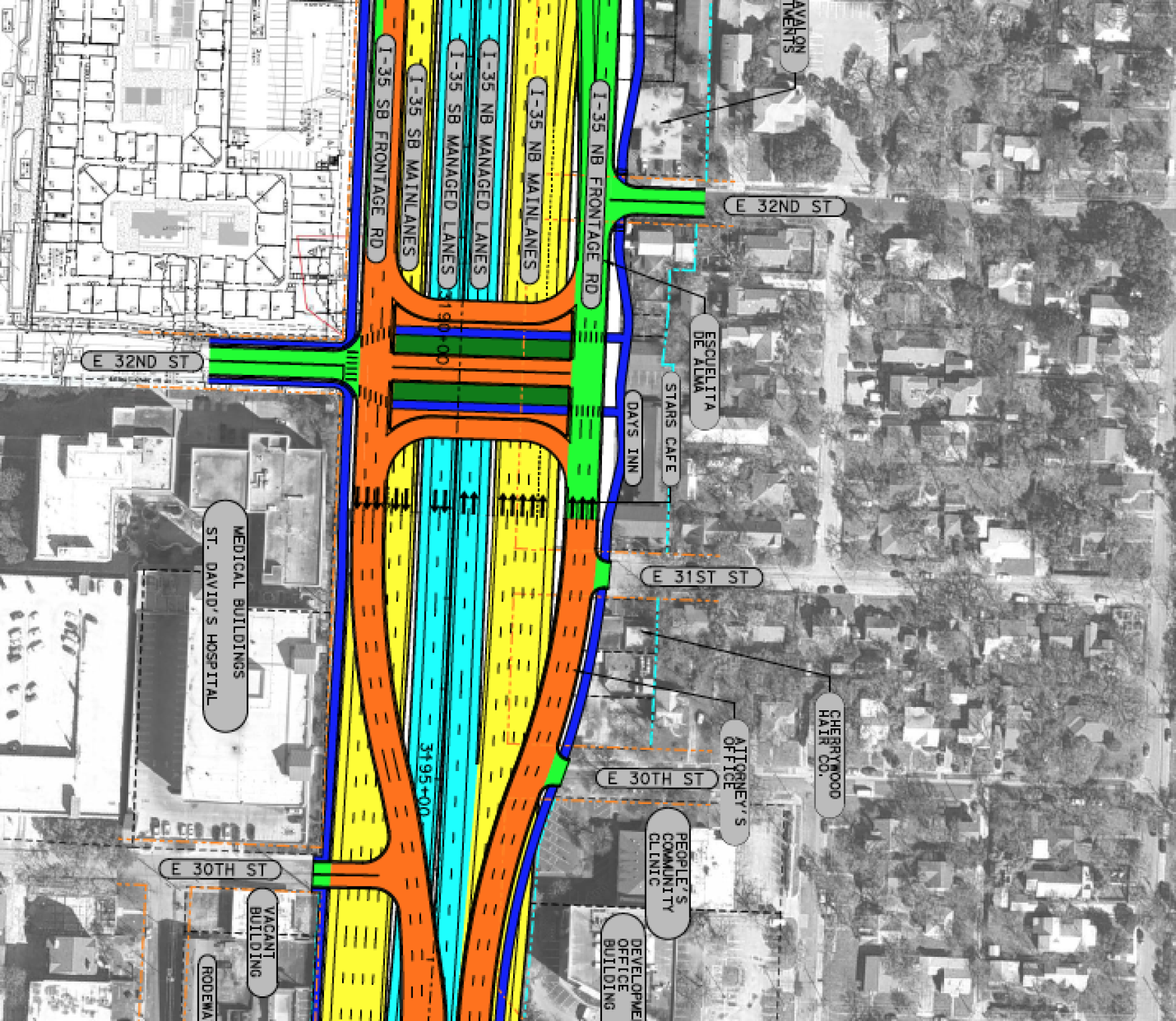
This portion of the schematic shows how the southbound frontage road would cross to the west side of I-35 after Dean Keeton.
From about Cesar Chavez to Ninth Street, the frontage roads would be separated by a median with trees or other vegetation. From Ninth to about 15th, the frontage roads would be separated by a lowered southbound lane as indicated in the cross-section below.
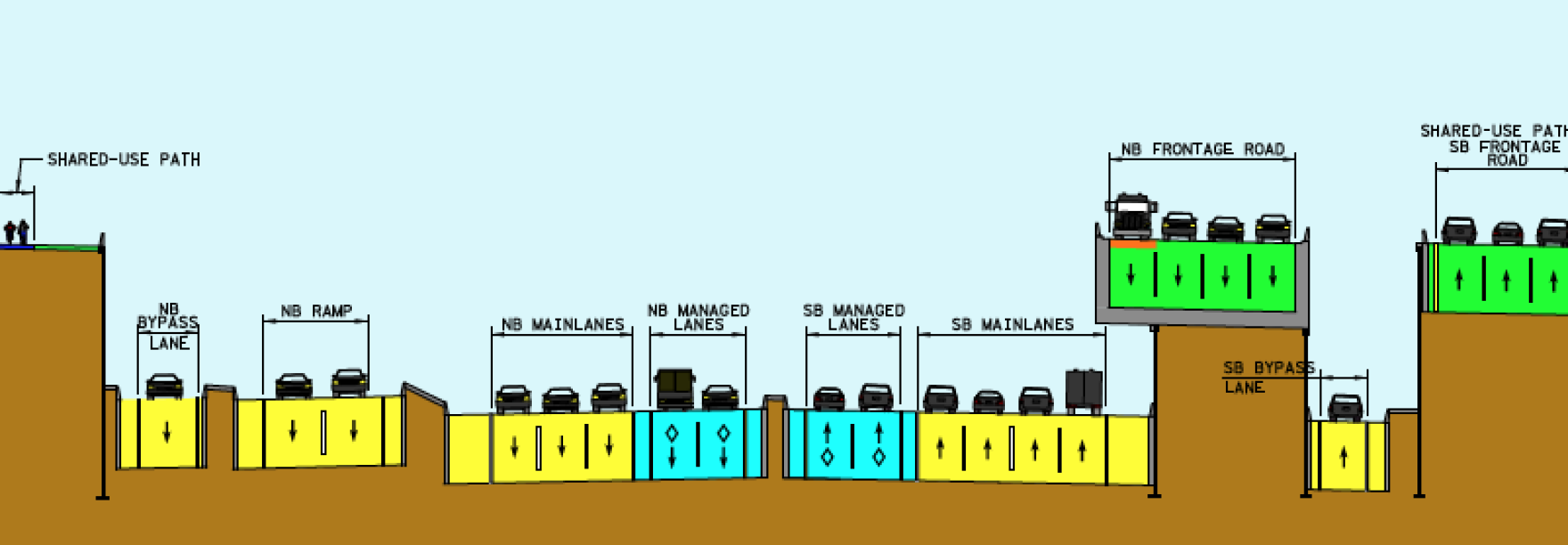
A cross-section showing how I-35 would be configured from approximately 15th Street to Ninth Street.
TxDOT disclosed the changes Tuesday as part of Build Alternative 3 – the name given to one of two remaining options that would increase the highway’s capacity by adding two HOV lanes in each direction. The HOV lanes would be off limits to single-occupancy vehicles.
Other changes to Build Alternative 3 include new bicycle and pedestrian crossings at 51st Street, Airport Boulevard, 41st Street, Martin Luther King Jr. Boulevard, 15th Street, Fourth Street, Third Street and Woodland Avenue.
The new proposal also includes something called a single-point urban interchange at Riverside Drive. A SPUI (pronounced “spooey”) is a relatively new type of high-volume intersection design that uses a single traffic signal. TxDOT says it chose the SPUI configuration to accommodate a light-rail line planned along Riverside.
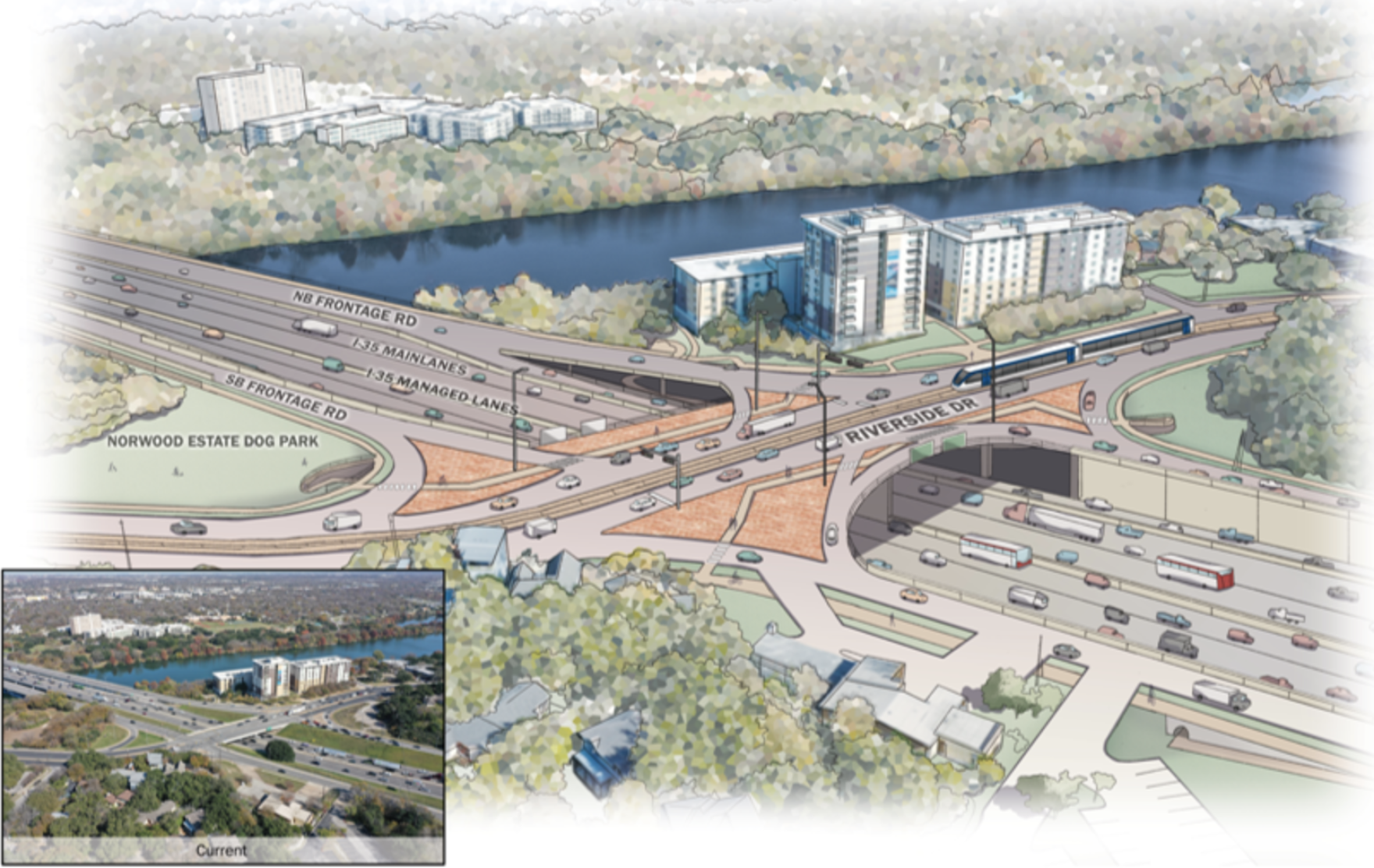
TxDOT’s new version of Build Alternative 3 includes something called a single-point urban interchange at Riverside Drive.
Build Alternative 3 would lower the I-35 main lanes for most of the project boundaries between Ben White and U.S. Highway 290 East, meaning the interstate would pass underneath streets like Airport Boulevard, Holly Street and Woodland Avenue.
Reaction from community groups that had been pushing for changes to the original plans were mixed.
“The (revision) reflects progress towards our common goals,” Reconnect Austin co-founder Heyden Black Walker said in a statement. The group has pushed for years to bury I-35 through the urban core. “Additional input on today’s significant modifications will help further refine this project.”
Rethink35, an organization advocating for I-35 to be removed and replaced with an urban boulevard, was less amenable to the revisions.
“TxDOT’s new I-35 plans are still a major highway expansion that will waste $5 billion to worsen traffic and contribute to the climate crisis,” Rethink35’s Adam Greenfield said. “The plans are rotten to the core and should be completely thrown out.”
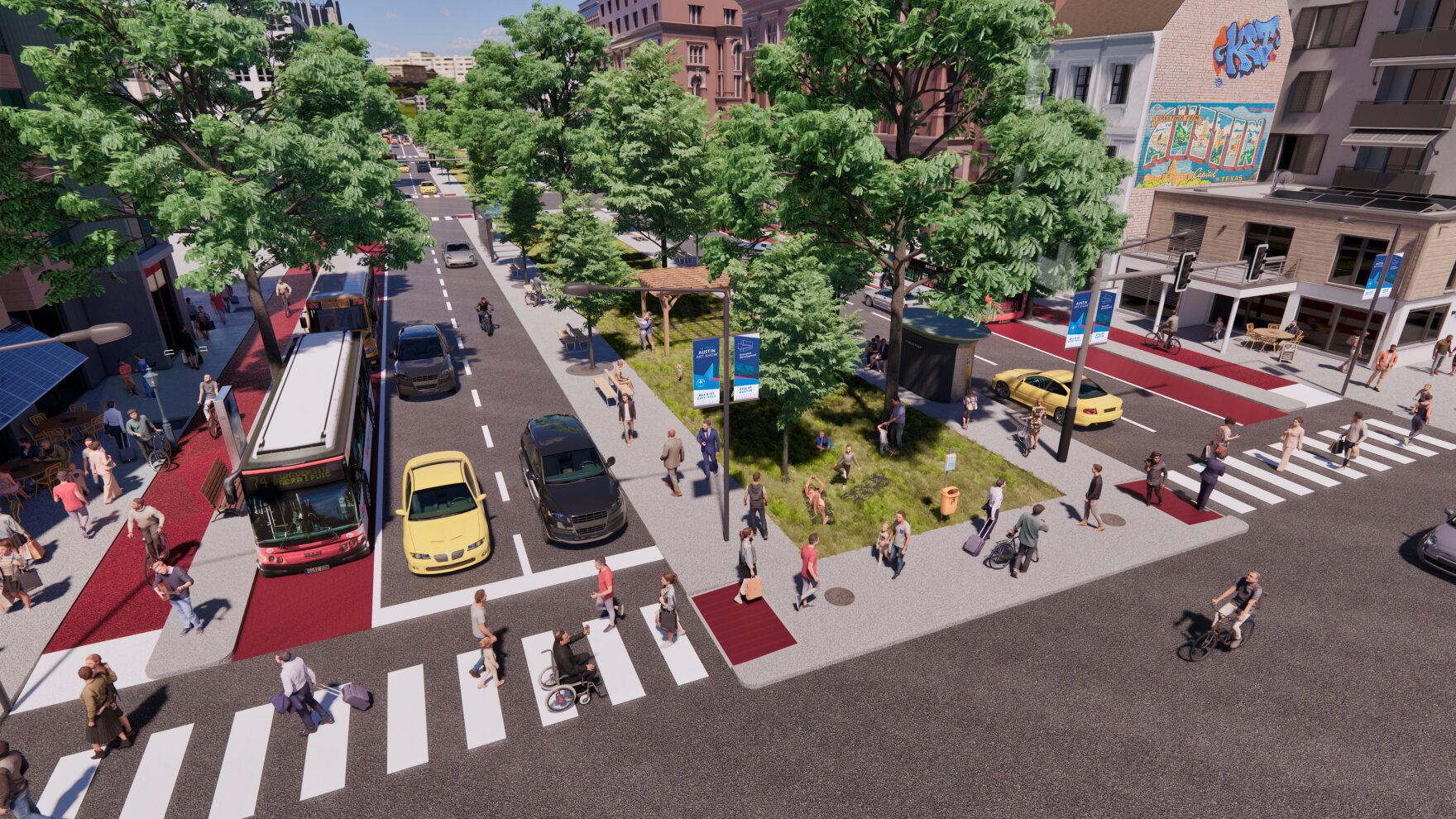
Rethink35 calls for removing I-35 and replacing it with an urban boulevard.
Meanwhile, a group of neighborhood associations immediately north of downtown said TxDOT’s efforts to improve the design neglected their stretch of the interstate.
“It’s feeling like we’re not being considered as part of the urban core,” said Brendan Wittstruck, chair of the North Central I-35 Neighborhood Coalition, which represents 12 neighborhood groups along the interstate between Martin Luther King Jr. Boulevard and U.S. 290 East/Koenig Lane.
“We’re seeing a lot of focus and investment on improving the downtown, and it’s coming as part of a project that is – in its current form – still creating a bigger division in central neighborhoods,” he said.
You can view detailed schematics of the revised I-35 widening plans on the project’s website. TxDOT will choose a final proposal and return to the public in about a year to get final comments. The agency hopes to start construction in late 2025.
This story was produced as part of the Austin Monitor’s reporting partnership with KUT.
The Austin Monitor’s work is made possible by donations from the community. Though our reporting covers donors from time to time, we are careful to keep business and editorial efforts separate while maintaining transparency. A complete list of donors is available here, and our code of ethics is explained here.
You're a community leader
And we’re honored you look to us for serious, in-depth news. You know a strong community needs local and dedicated watchdog reporting. We’re here for you and that won’t change. Now will you take the powerful next step and support our nonprofit news organization?











